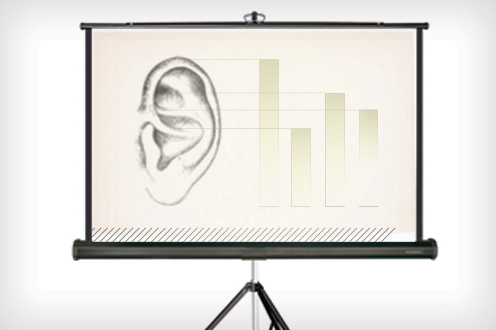By
Team DIGO | 11/27/2011 | in
To us, direct marketing is the design discipline that is obsessed with stimulating action. Our on-site direct experience goes back decades and includes some of the most successful campaigns in recent direct marketing history.
Two forces drive the marketing successes of the future: the data/technology revolution and the need for brands to serve as the guideposts of meaning in an increasingly complex and segmented world. We stay at the forefront of these trends by serving clients who have the need and the vision to innovate and lead. Our founder is a direct marketer, and the disciplines of direct marketing infuse everything we do. We live and die by results.
We succeed when we deliver results for our clients. With this approach, we believe that every employee at DIGO is part of the direct marketing team, as is every client.
DIGO’s direct services include:
- Testing Strategies
- Direct Media
- Analytics & Reporting
- Integrated Campaigns
- Direct Creative in All Media
By
Team DIGO | 11/27/2011 | in
Proove(sm) powers brand-driven growth with accountable media planning and buying. Led by digital media pioneer Adam Lutz, who has successfully deployed hundreds of millions of media dollars for top advertisers, we seek tangible business results in everything we recommend. Key performance metrics are focused on engagement of the right audiences in most cost-effective ways. The latest technology and offerings provide our clients the most efficient and strategic media plans and buys.And we are first in line to learn about the latest innovations, technology and data to help drive our clients business, driving the standard of proof into pioneering territory such as social, mobile, owned and earned media.
By
Team DIGO | 11/27/2011 | in
Every campaign at DIGO is vetted by top PR talent, professionals who have been responsible for building such brands as Progressive, IKEA, Domino’s Pizza, George Foreman Grill, Tibet, H&M, and Investools, among others. Thanks to our long-standing, integrated partnership with Ericho PR, we can offer a powerful combination for brand ideas: buzz, ink and airtime. As a result, our clients receive a disproportionate amount of meaningful exposure for their investment.
By
Team DIGO | 11/27/2011 | in
Strategy is different in a social world because brands grow differently when people rule.
We see the signs all around us. Design becomes more important—increasingly, it’s the key differentiator among brands. PR also rises in importance, while advertising falls. Discovering, channeling, exciting and curating expressions of passion become key disciplines.
At DIGO, strategy is about knowing where we’re going and where everyone else is going, too. It’s about solving the problems of today while building a vision for the future in an emerging marketplace.
We believe that emotion drives behavior, and that design details can minimize or remove barriers to action. We discover and leverage the emotional meaning of a brand, then build this meaning into everything we do. Emotion leveraged to action is DIGO’s hallmark as a master direct and social marketing agency.
DIGO’s strategic services include:
- Brand Invention
- Brand Launch
- Brand Relaunch
- Brand Positioning
- Insight-Driven Product & Service Innovation
- Social Media Audit
- Social Media Kick Start
- Competitive Strategy
- Integrated Marketing & Media Strategy
- Marketing & Business Strategy Alignment
- Metrics for Success
By
Team DIGO | 11/18/2011 | in

A weekly post on some of our favorites from around the Web.
This week’s topic: Google+ Brand Pages
By
Team DIGO | 11/11/2011 | in

A weekly post on some of our favorites from around the Web.
This week’s topic: Mobile First
By
Team DIGO | 11/10/2011 | in

If you’re normal, you think that because you’re noting everything important that’s said and agreed in a meeting that you’re taking notes in the most effective way. But the normal way of doing it is a drag. It misses one of the greatest kicks that note-taking can give a team.
In every meeting, someone should be taking public notes. If they’re entering notes into a computer, then the notes should be displayed on a screen. If it’s a conference call, then a shared internet-based screen should be employed.
When people see the output of a meeting take shape before their very eyes, the reinforcement works wonders. Soon, people begin to play a game together of getting their best ideas up on that board. They work to improve the meeting output in real time. Instead of collecting problems, they fashion solutions.
The principle is pretty simple. Recognition is reward. Most of us learned a bit about behavioral conditioning in our school days. We know that behaviors that are rewarded tend to increase. We know that the sooner the reward comes after the desired behavior, the better it works. Well, people like to see their ideas have an impact. They like to know they are heard and understood.
Imagine how much better this works than a group of people throwing their thoughts up into the air and suspecting that much of what they say has not even been heard. Or if heard, not registered. Or if registered, not quite gotten right. Or if gotten right, then never to be read or seen again. Or if seen again, not by the person or people from whom the individual most wants recognition. And perhaps credit will go to someone else, as it often does.
That which happens out of sight encourages paranoia, which leads to acting out in some and retreat or depression in others. That which happens in the light is encouraging and reassuring. It speeds up the progress of a team. So, in every meeting, have the note taker take notes in public. It works.
By
Team DIGO | 11/04/2011 | in

People in a hurry have to choose.
Choose a veneer of blamelessness. Or choose optimal progress.
It’s really that simple, and that difficult. Because people like to be blameless. They like to manage risk by trying to eliminate it. They want to appear all buttoned up, all the time. They don’t want be seen to fail, even in small ways on less important things.
But what if your choice is to risk failing on the small things versus a certainty of falling behind on the essential things?
My hero Abraham Lincoln was famous in his time for his rumpled clothes and crazy hair. He had a nation to save! He expressly believed in conceding less important things to achieve essential things.
Steve Jobs wore the same uniform every day. Black cotton polo shirt. Jeans. The Michael Jordan of meticulous choosing, he didn’t waste a minute deciding what to wear in the morning.
Our presentations have typos.
This is frankly divisive. Some people see a typo as a symbol of all that is unholy and shoddy in American enterprise, as a malodorous portent of some deep rot. In some cases, this is simply perfectionism rearing its fearful head. Some people are perfectionists. These people simple don’t belong in fast growing mid-market organizations, unless of course they are in accounting, collections, compliance, proofreading or production.
Others may be laboring under the drag of prejudices acquired in a pre-digital world. A newspaper published with a typo – as even the world’s-greatest newspaper, the New York Times, is every day — is irreparable. Billboards and brochures are expensive and embarrassing to fix. That’s why we employ professional proofreaders and have extensive processes for combing through documents throughout the production process. I’m knocking wood as I write this, but we haven’t had an error in a printed piece for well over a decade – a truly rare track record for any agency. But different levels of vigilance are appropriate to different media. A web post can be instantly updated. Timeliness might be the greater value. See the forest for the trees.
Personally, I hate a typo that affects my experience. If I’m in the middle of a story and my attention is suddenly drawn to a misspelling, the spell is broken (which is a neat little phrase with a nice confluence of meanings here). Elsewhere, not so much. So, not all typos are created equal. In early drafts, concept presentations, and throughout our process, short of pre-production, they are symbols that we’re putting first things first. First get the strategy right. Then get the concept right. Then get the plan right. Ultimately, get everything executed brilliantly and correctly.
Did Lincoln have pride in his work? He took pleasure from a successful outcome. He said on many occasions that he would save the Union any way he could – any way. There is no question he could be a meticulous craftsman. His law partner and great friend, Herndon, said that he could work for hours or days perfecting a single phrase. But not all of them. Not in those days, long before television and the Internet, when people expected four-hour speeches and seven-hour debates for their entertainment.
After he was President, it was different. He knew that everything he said could be used against him and his cause, so he avoided speaking extemporaneously, and he used two secretaries to write and proof and check.
Same guy, two different contexts. When Lincoln was a fast-growing visionary brand, he perfected the things that needed to be perfect, and he let the other things go. When he became CEO of a large, troubled enterprise, he reprioritized.
Do your priorities fit your situation and your ambitions? I like to see symbols that our priorities are in the right place.
So, when I see a well-placed typo, I smile. Those typos are good.





